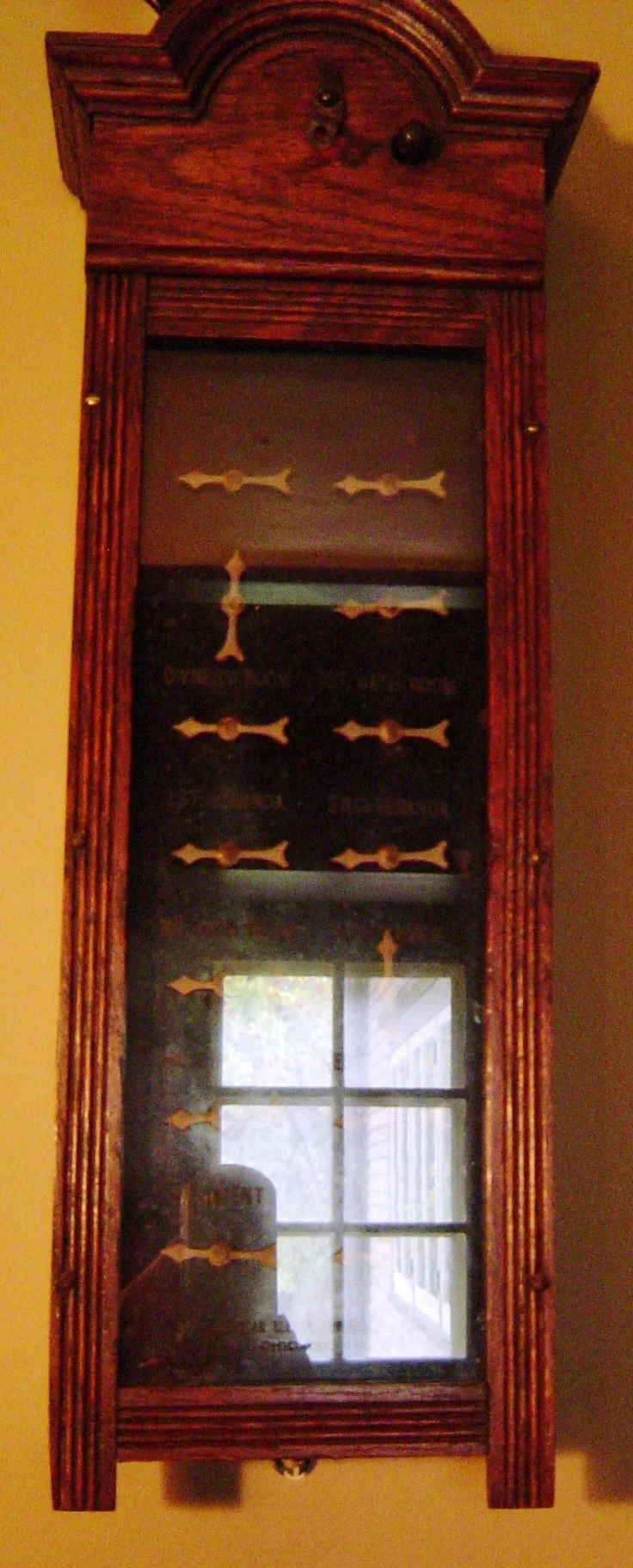DINING ROOM
The Fabyans loved to entertain at their Villa. The dining room was a center of activity during all seasons. We’ve been told that Nelle would entertain up to twenty people for lunch and dinner during World War I, fearing people were not eating well due to food rationing.
The wooden spindle privacy screen, located across the room from the sun porch, was designed by Frank Lloyd Wright as a decorative element with a practical purpose. The privacy screen allowed servants to check on guests without being seen while at the same time providing airflow to help keep guests comfortable. Wright used privacy screens such as this to also highlight the beauty of simple, natural woodwork—a hallmark of his early Prairie Style period.
Even though Frank Lloyd Wright and Colonel Fabyan used modern technology when appropriate, Wright did not want a telephone interfering with his interior design. A little cabinet, hidden within the column between the den and dining rooms was added to house the telephone as a solution to this aesthetic problem. On the column across from this cabinet you can see a button that looks like a doorbell. This was attached electrically to a call box in the butler’s pantry and gave the Fabyans a way to summon servants to the dining room.
The Samurai suit on display (pictured at top) is perhaps our oldest artifact and may have been a gift from Japanese General Kuroki or one of the Fabyans’ other Japanese acquaintances. The display case was built later by the Forest Preserve District to house the likely more than 300-year-old suit.
It is impossible not to notice the lovely art objects from Asia in the cases displayed in the dining room. The origin of the art is unknown but we suspect some were acquired through importers and some were given as gifts. The Colonel’s involvement in the Russo-Japanese peace negotiations at the Treaty of Portsmouth in 1905 helped develop friendships with Baron Komura and General Kuroki. Both men came at different times to visit Riverbank where the Fabyans hosted them.
The large marble statue is called “Intelligence Subduing Brute Force,” but also known as “Diana and the Lion.” It was sculpted by F. Edwin Elwell in the neoclassical style and displayed at the 1893 World’s Columbian Exposition in Chicago in the building that is now the Museum of Science and Industry. The statue was originally on the grounds of Riverbank but was brought inside to protect it from the elements.
Stroll across the hall into the Butler’s Pantry.


